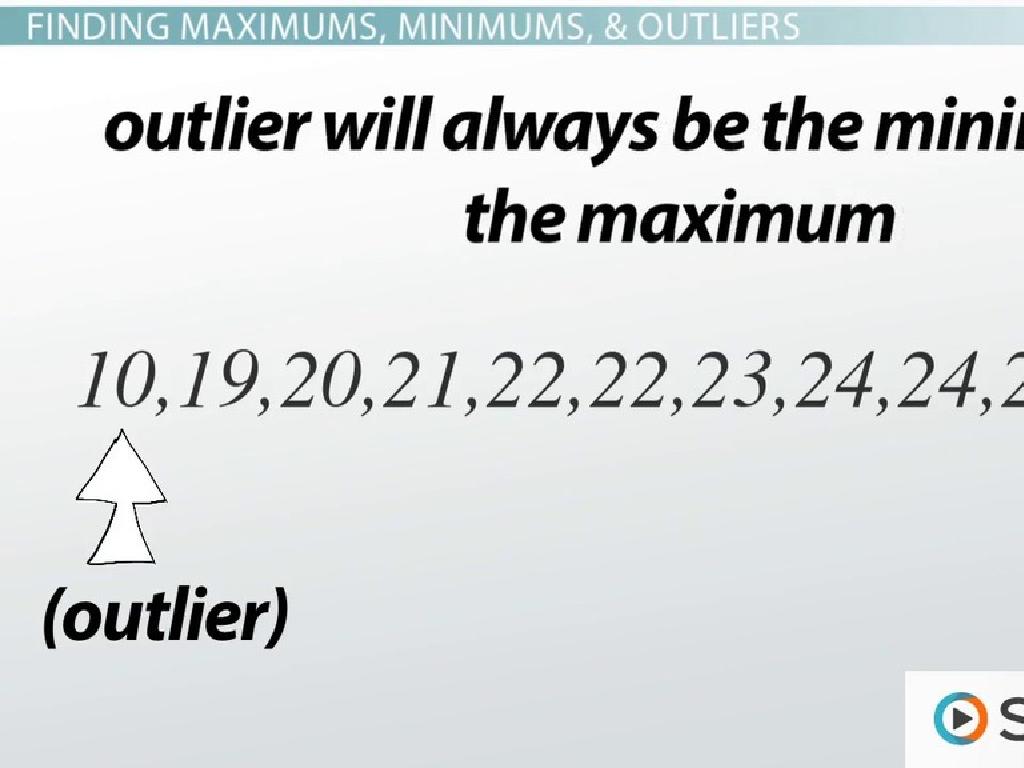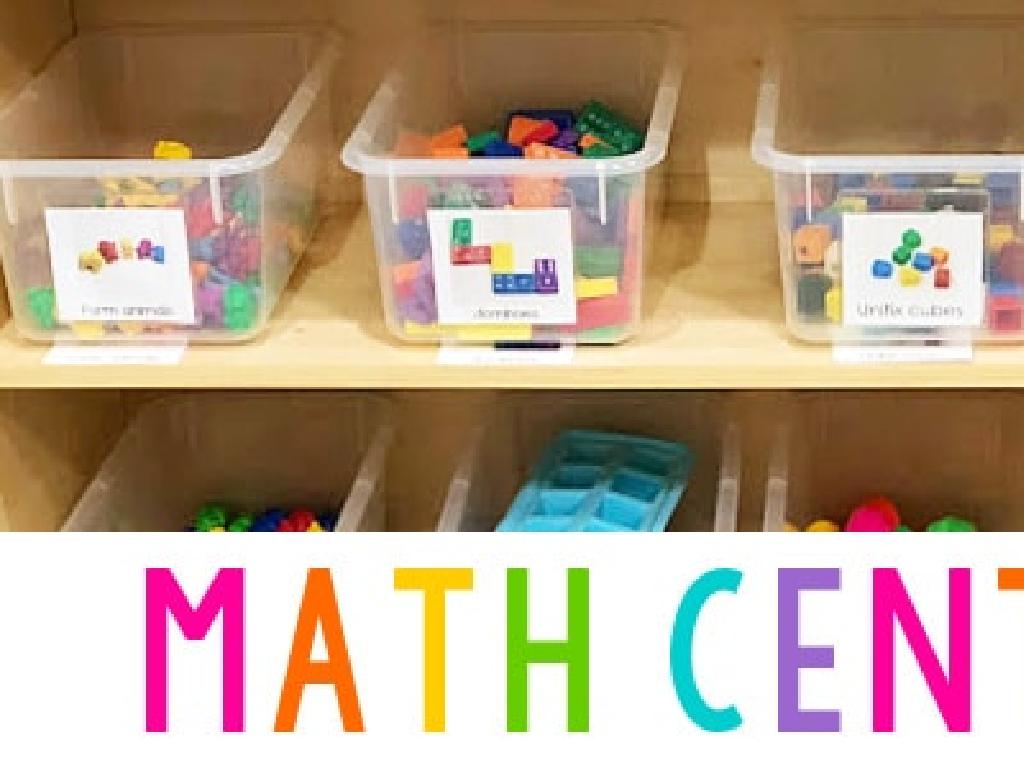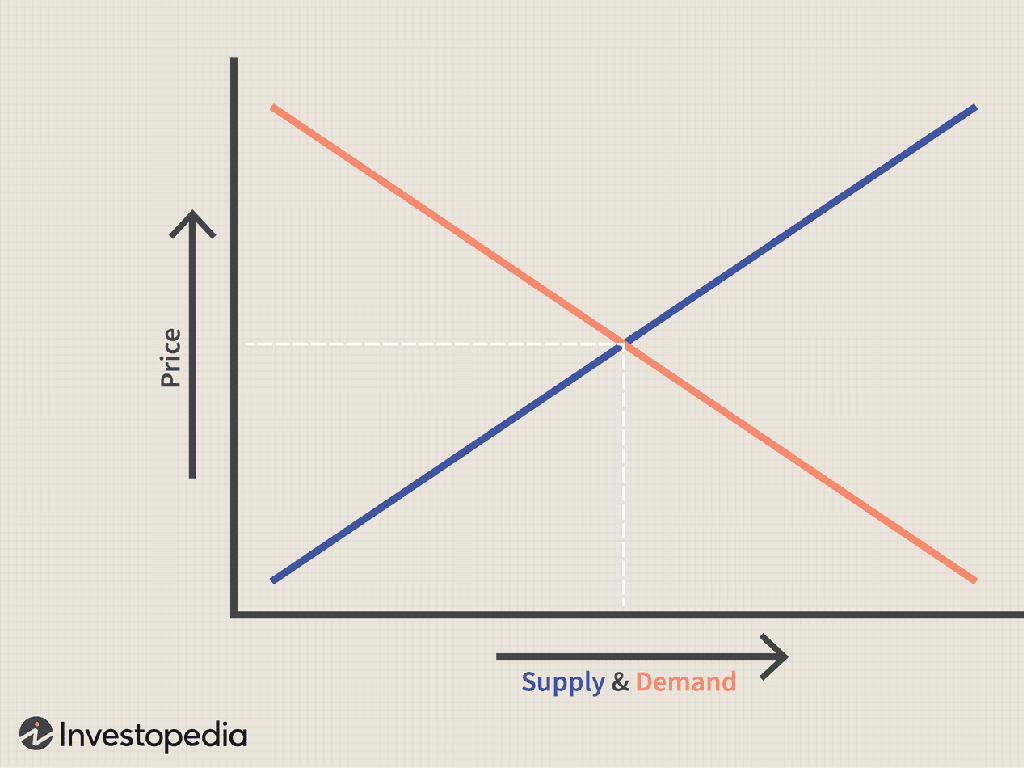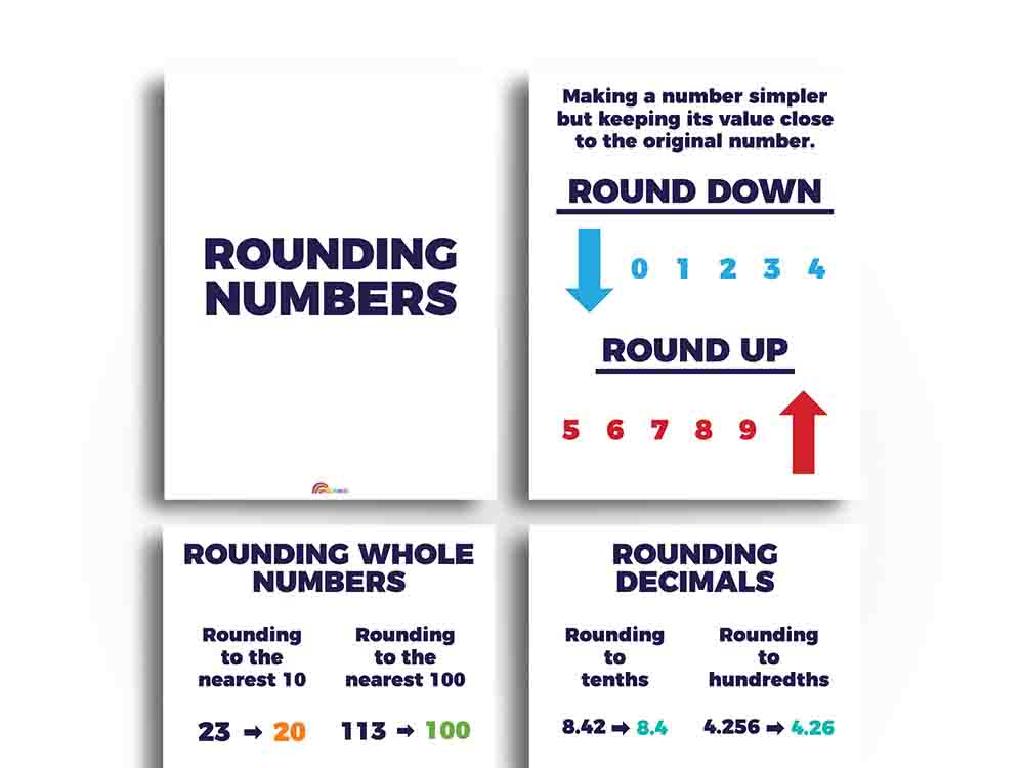Identify Similar Triangles
Subject: Math
Grade: Eighth grade
Topic: Transformations And Congruence
Please LOG IN to download the presentation. Access is available to registered users only.
View More Content
Welcome to Similar Triangles!
– Grasping similarity in shapes
– Similar shapes have the same shape but different sizes.
– Exploring triangle characteristics
– Triangles have sides and angles that define their shape.
– Criteria for triangle similarity
– Similar triangles have the same angles and proportional sides.
– Today’s goal: Identify similar triangles
|
This slide introduces the concept of similarity within geometric shapes, focusing on triangles. Students will learn that similar triangles have the same shape but may differ in size. The lesson will cover the properties that define triangles, including their sides and angles. Students will be taught the specific criteria that determine triangle similarity, such as corresponding angles being equal and the sides being in proportion. The goal for today’s class is for students to be able to identify similar triangles using these criteria. Encourage students to think about real-world examples where they might see similar shapes, such as in art or architecture, to help them relate to the concept.
Understanding Similar Triangles
– Define similar triangles
– Triangles with same shape but different sizes
– Properties: sides and angles
– Proportional sides and equal corresponding angles
– Real-life examples
– Architectural designs, art, and photography
– Recognizing similar triangles
– Use proportion and angle measures to identify
|
This slide introduces the concept of similar triangles, which are triangles that have the same shape but may differ in size. The properties of similar triangles include sides that are proportional to each other and angles that are equal. To help students understand the concept, provide real-life examples where similar triangles are observed, such as in the design of bridges or the composition of a photograph. Encourage students to practice recognizing similar triangles by comparing the ratios of their sides and the measures of their corresponding angles. This foundational knowledge is crucial for understanding more complex geometric concepts and for solving problems involving similar figures.
Criteria for Triangle Similarity
– Angle-Angle (AA) Similarity
– Two triangles are similar if two angles match.
– Side-Side-Side (SSS) Similarity
– Triangles are similar when all corresponding sides are proportional.
– Side-Angle-Side (SAS) Similarity
– Similarity occurs when two sides are proportional and included angle equal.
|
This slide introduces the criteria for determining whether two triangles are similar. Similarity in triangles is a fundamental concept in geometry that allows us to understand how shapes can be proportionally the same even if they are different in size. The Angle-Angle (AA) criterion states that two triangles are similar if they have two corresponding angles that are congruent. The Side-Side-Side (SSS) criterion requires all corresponding sides of the triangles to be in proportion. Lastly, the Side-Angle-Side (SAS) criterion requires two sides to be in proportion and the angle between those sides to be congruent. It’s crucial to emphasize that the angle in SAS must be the angle between the two sides being compared. Provide examples for each criterion to solidify understanding, and consider incorporating an activity where students find similar triangles using these criteria.
Angle-Angle (AA) Similarity
– Two triangles with two equal angles
– If two angles of one triangle are equal to two angles of another, the triangles are similar.
– Determine similarity using AA
– Compare two angles from different triangles to check for similarity.
– Practice problem on AA similarity
– Solve a problem to identify AA similarity between triangles.
|
This slide delves into the concept of Angle-Angle (AA) Similarity, a key criterion for identifying similar triangles in geometry. To establish that two triangles are similar, students must recognize that if two angles in one triangle are congruent to two angles in another triangle, the triangles are similar by AA. This is because the third angles will also be equal due to the angle sum property of triangles. The practice problem should be a clear example that allows students to apply the AA Similarity rule. Encourage students to explain their reasoning and show their work during the practice problem. This will help solidify their understanding of the concept and prepare them for more complex problems.
SSS Similarity Criterion for Triangles
– Compare three sides of triangles
– Check if the sides of two triangles are in proportion to each other.
– Determine similarity with SSS
– If the corresponding sides are proportional, triangles are similar.
– SSS Similarity practice problem
– Use a practice problem to apply the SSS rule for similarity.
|
This slide delves into the Side-Side-Side (SSS) Similarity Criterion, which is a method to determine if two triangles are similar. To use this criterion, students must compare the lengths of the three sides of one triangle with the corresponding sides of another triangle. If all three sets of sides are in proportion, the triangles are similar. This is a fundamental concept in understanding triangle similarity and is crucial for solving problems involving geometric figures. Provide a practice problem where students can apply the SSS rule to identify similar triangles, reinforcing their understanding of the concept. Encourage students to show their work step by step and to discuss their reasoning during the next class.
SAS Similarity in Triangles
– Understanding SAS Similarity
– Two sides and the included angle are proportional in similar triangles.
– Criteria for SAS Similarity
– Two triangles are similar if two sides are proportional and the included angles are equal.
– Steps to Determine SAS Similarity
– Measure sides, compare ratios, and check included angle to determine similarity.
– Practice Problem on SAS Similarity
– Given triangles ABC and DEF, show if they are similar using SAS.
|
This slide delves into the Side-Angle-Side (SAS) Similarity Theorem, which states that two triangles are similar if their corresponding sides are in proportion and the included angles are congruent. Begin by explaining the concept of proportionality and congruence in the context of triangles. Demonstrate the process of comparing two sides and the angle between them to establish similarity. Provide a practice problem where students apply the SAS criteria to determine if two given triangles are similar. Encourage students to work through the problem, showing their work on how they measure, compare, and conclude similarity. This exercise will solidify their understanding of triangle similarity and the SAS Similarity Theorem.
Applying Similarity in Triangles
– Use similar triangles to find measures
– Apply similarity in real-world scenarios
– Similar triangles can determine distances and heights
– Map reading and architecture examples
– Use scale on maps or in building designs to find actual distances
– Group activity: Tackling a triangle problem
– Solve a given problem in groups, using similarity concepts
|
This slide aims to show practical applications of similar triangles in various fields such as map reading and architecture. Students will learn how to use properties of similar triangles to find unknown lengths and angles. Emphasize the importance of scale factor and how it applies to real-world situations. For the group activity, provide a problem where students must apply their knowledge of similar triangles to find missing measures. This could involve calculating the height of a building, the width of a river, or the scale of a map. Provide clear instructions and ensure each group understands the task. Offer at least four different problems so that not all groups are working on the same problem, which will encourage a variety of solutions and discussions in the follow-up.
Class Activity: Identifying Similar Triangles
– Work in pairs on triangle activity
– Use AA, SSS, SAS for similarity
– Angle-Angle (AA), Side-Side-Side (SSS), Side-Angle-Side (SAS) criteria
– Justify why the triangles are similar
– Explain the reasoning for each pair’s similarity
– Present findings to the class
|
This activity is designed to encourage collaborative learning and application of similarity rules in triangles. Students should work in pairs to foster teamwork and discussion. They will use the Angle-Angle (AA), Side-Side-Side (SSS), and Side-Angle-Side (SAS) criteria to identify similar triangles. It’s crucial for students to justify their answers, explaining the reasoning behind the similarity of each pair of triangles they identify. After completing the activity, each pair will present their findings to the class, which will help reinforce their understanding and improve their communication skills. For the teacher: Prepare several sets of triangles with varying degrees of complexity. Ensure that there are enough examples for AA, SSS, and SAS to provide a comprehensive understanding of the concepts. Be ready to guide students who may struggle with the justification part of the activity.
Wrapping Up: Similar Triangles
– Review of similarity criteria
– Remember: AA, SSS, SAS are key to similarity
– Significance of triangle similarity
– Triangle similarity is foundational for geometry problems
– Homework: Similar Triangles worksheet
– Complete the worksheet to practice identifying similar triangles
|
As we conclude today’s lesson, it’s important to recap the criteria that determine triangle similarity: Angle-Angle (AA), Side-Side-Side (SSS), and Side-Angle-Side (SAS). Understanding these concepts is crucial as they form the basis for many geometric proofs and real-world applications, such as map-making and architecture. For homework, students are assigned a worksheet that provides practice on identifying similar triangles using these criteria. This will reinforce their learning and prepare them for more complex geometric problems. Encourage students to attempt all problems and bring any questions to the next class for clarification.





